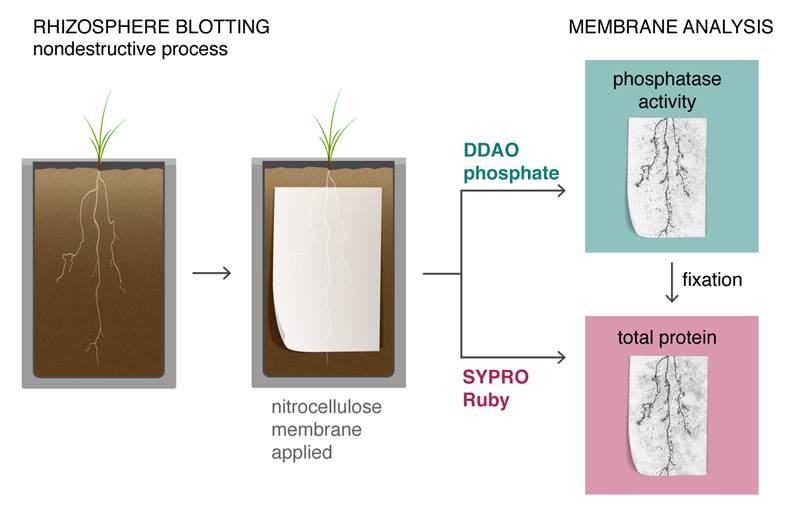The Science
The Impact
Phosphorus is an essential nutrient for plants, and demand for phosphorus fertilizers is increasing as the world’s population grows. Most of these fertilizers are made from rock phosphorus, a non-renewable resource. This research provides new insights into the complex dynamics of phosphorous exchange between soil, microbes, and plant roots. This new approach will help scientists identify strategies to use phosphorus more efficiently to produce bioenergy crops and for agriculture in general.
Summary
Soil bacteria, fungi, and plants produce enzymes called phosphatases, which convert organic sources of phosphorus into a form that plants can absorb. Researchers have studied the activity of soil bacteria and fungi in soil samples to learn about the overall functional potential of the environment. But to better understand the dynamics between soil, plants, and microbes, scientists need more detail. To accomplish that, a team of researchers developed a new technique based on root blotting to reveal phosphatase activity and distribution around plant roots. They grew switchgrass in flat pots or “rhizoboxes” containing soil with pellets of root matter as sources of organic phosphorus. They next applied a nitrocellulose membrane to capture proteins around the roots. Finally, the researchers stained the membrane with fluorescent indicators for phosphatase activity and protein concentration. This revealed the spatial distribution of phosphatase around the roots of plants and highlighted regions of increased phosphatase activity.
The new technique’s combination of membrane extraction, with rapid analysis via fluorescent probes to reveal the location of phosphatase activity, offers a new tool for environmental applications. This technique could be used to study phosphatase activity over time, as well as the activity of other nutrient-cycling enzymes. By expanding this technique, scientists could simultaneously visualize multiple enzyme types in soil systems.
Funding
Development of this method was funded by the DOE Office of Science, Office of Biological and Environmental Research, through the DOE Office of Science Early Career Research Program for principal investigator James Moran.
Original post https://alertarticles.info



